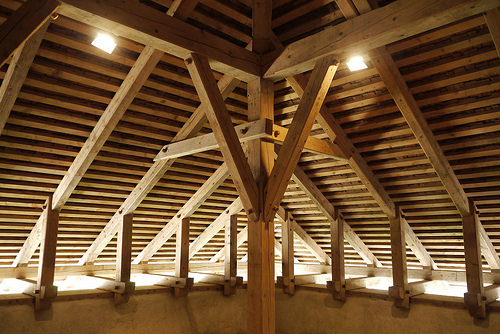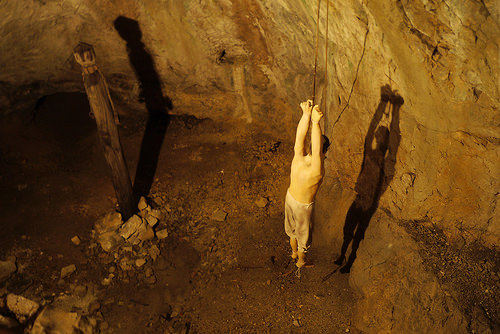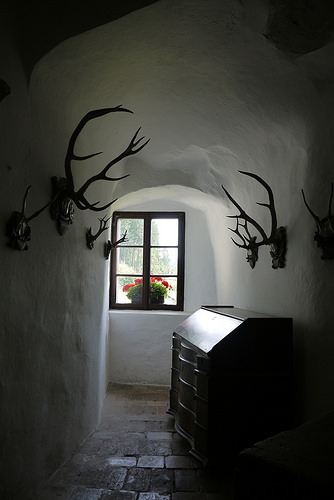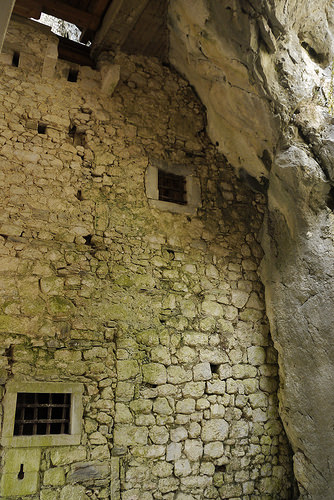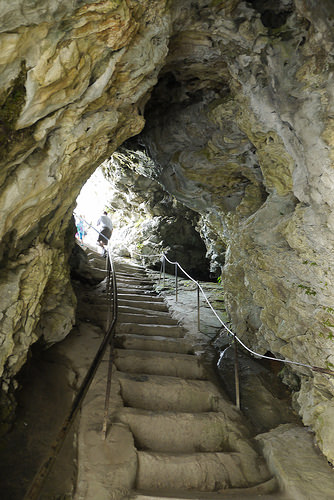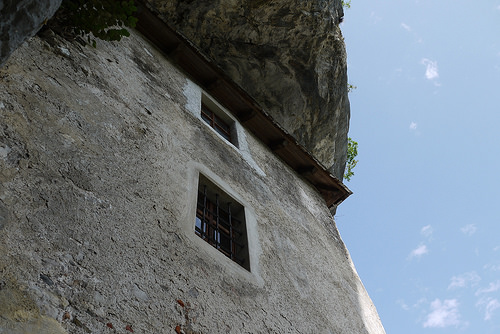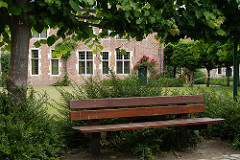The annual Erazmus Knight’s Tournament festival at the picturesque Predjamski Castle, near Postojna offers visitors a window into the past in the Middle Ages – in 16th century through jousting and sword fighting competitions. There is a medieval market and other events featuring people in period dress, as well as period food, song and dance.
Knights, swordsmen and archers show their skills on the field of Combat. The ’star’ and the historic character are knight Erasmus who was the famous inhabitant of the castle and his friend Andreas Baumkircher who protected Vienna from the Turks in that time. Throughout the day people are dressed in the costumes of the 16th century.
4 Comments CherryPie on Jan 16th 2016
The coat of arms of the Kobenzl family, who enlarged and modernised Predjama Castle in the 16th century. The castle remained in their possession until 1810.
The coat of arms of the Coronini family who were lords of the castle in the first half of the 19th century.
The coat of arms of the Dukes Windischgratz, who owned the castle from 1846 to the end of WWII.
Information from Predjamski Grad (Predjama Castle) by Dr. Ivan Stoper
5 Comments CherryPie on Jan 15th 2016
All that remains of the original furnishings is an older masonry altar slab and an altar stone.
On the altar stone sits a priceless treasure, a stone Pieta carved in the characteristic delicate style of the chivalric Gothic period of the second decade of the 15 century, which has unfortunately lost its original polychromatic covering and has been completely cleaned. It was in all probability brought here from a village pilgrimage church consecrated to the Virgin Mary, while a renaissance altar extension from 1645 has disappeared.*
*From Predjamski Grad (Predjama Castle) by Dr. Ivan Stoper
10 Comments CherryPie on Jan 14th 2016
10 Comments CherryPie on Jan 13th 2016
Photos showing Predjama Castle built in the cave mouth and rock face. The last photo shows how the castle collected its water supply. Beneath the water collector is a well to hold the water.
10 Comments CherryPie on Jan 12th 2016
Predjama Castle is a Renaissance castle built within a cave mouth in south-central Slovenia, in the historical region of Inner Carniola. It is located in the village of Predjama, approximately 11 kilometres from the town of Postojna and 9 kilometres from Postojna Cave.
The castle was first mentioned in the year 1274 with the German name Luegg, when the Patriarch of Aquileia built the castle in Gothic style. The castle was built under a natural rocky arch high in the stone wall to make access to it difficult. It was later acquired and expanded by the Luegg noble family, also known as the Knights of Adelsberg (the German name of Postojna).
The legend of Erazem of Predjama
The castle became known as the seat of the knight Erazem Lueger (or Luegger), lord of the castle in the 15th century and a renowned robber baron. He was the son of the Imperial Governor of Trieste, Nikolaj Lueger.
According to legend, Erazem came into conflict with the Habsburgs when he killed the commander of the Imperial army, Marshall Pappenheim, who had offended the honour of Erazem’s deceased friend, Andrej Baumkircher ofVipava. Fleeing the vengeance of the Holy Roman Emperor, Frederick III, Erazem reached in the family fortress of Predjama. From there, he allied himself with King Matthias Corvinus and began to attack Habsburg estates and towns in Carniola. The emperor commissioned the governor of Trieste, Andrej Ravbar, with the capture or killing of Erazem.
The besiegers bribed one of Erazem’s servants to reveal when his master was in attendance at the privy; the toilet, situated on the top floor and at the very edge of the castle, was the one place that was not impregnable. When the moment came, the servant placed a candle at the window, and, with a single cannonball, the besieging army killed Erazem.[2]
After the reconstruction
After the siege and destruction of the original castle, its ruins were acquired by the Oberburg family. In 1511, the second castle, built by the Purgstall family in the first decade of the 16th century, was destroyed in an earthquake. In the year 1567, Archduke Charles of Austria leased the castle to baron Philipp von Cobenzl, who paid it off after 20 years. In 1570, the current castle was built in theRenaissance style, pressed next to a vertical cliff under the original Medieval fortification. The castle has remained in this form, virtually unchanged, to the present day.
In the 18th century, it became one of the favourite summer residences of the Cobenzl family. Both the Austrian statesman Philipp von Cobenzl and the diplomat Count Ludwig von Cobenzl spent time in the castle.
In 1810, the castle was inherited by Count Michael Coronini von Cronberg, and in 1846 it was sold to the Windischgrätz family, who remained its owners until the end of World War II, when it was nationalized by theYugoslav Communist authorities and turned into a museum.
The hidden passageway
A vertical natural shaft leads out of the original castle, which Erazem ordered to be enlarged, and leads to the exit located at the top of the cliff, 25 meters away from the cliff’s edge. This shaft allowed Erazem to secretly supply the castle with food in the time of the siege; he also used it to continue with his robberies.
10 Comments CherryPie on Jan 11th 2016
The Angel that presided o’er my birth
Said, “Little creature, form’d of Joy and Mirth,
“Go love without the help of any Thing on Earth.”
William Blake
2 Comments CherryPie on Jan 10th 2016







